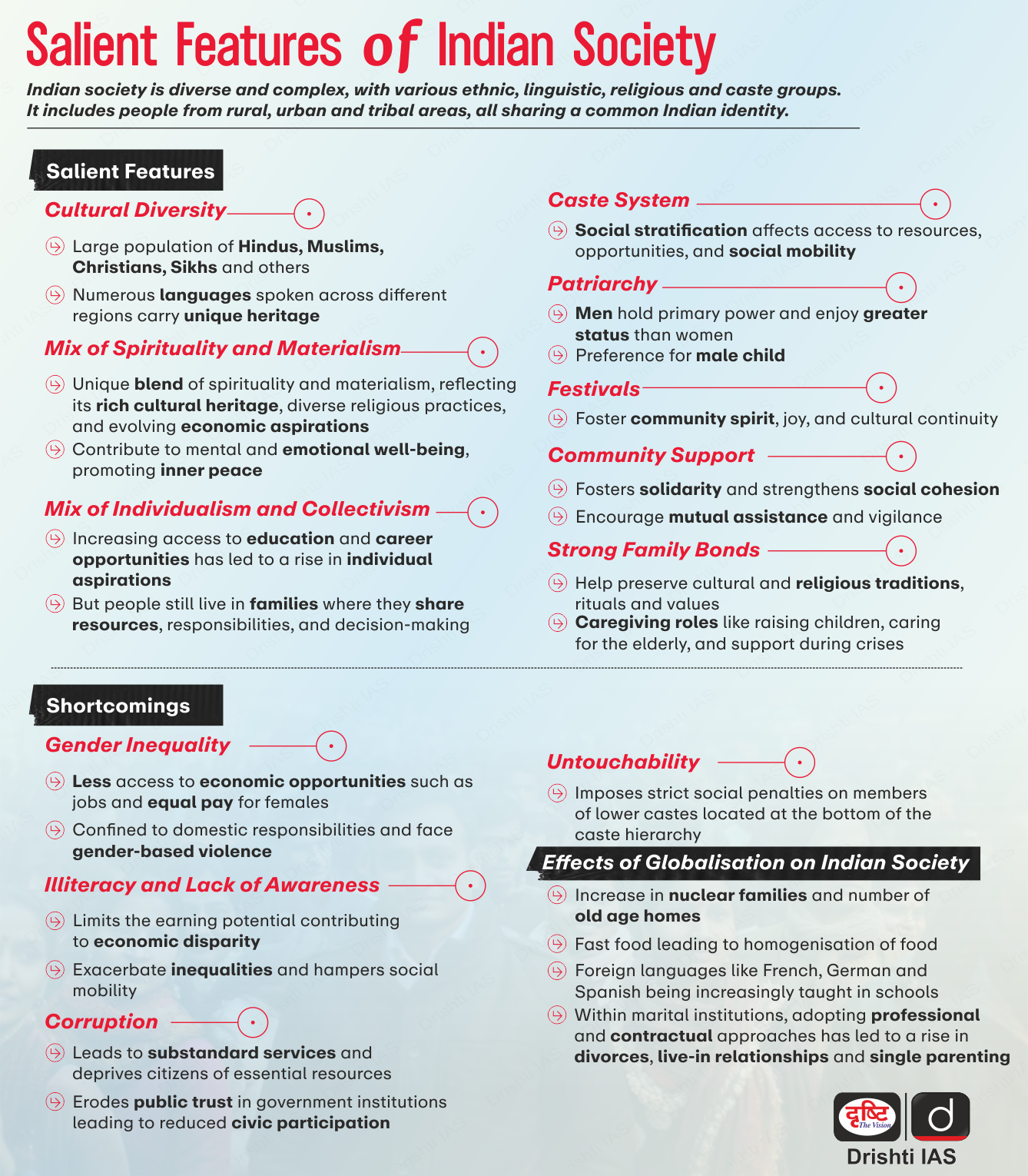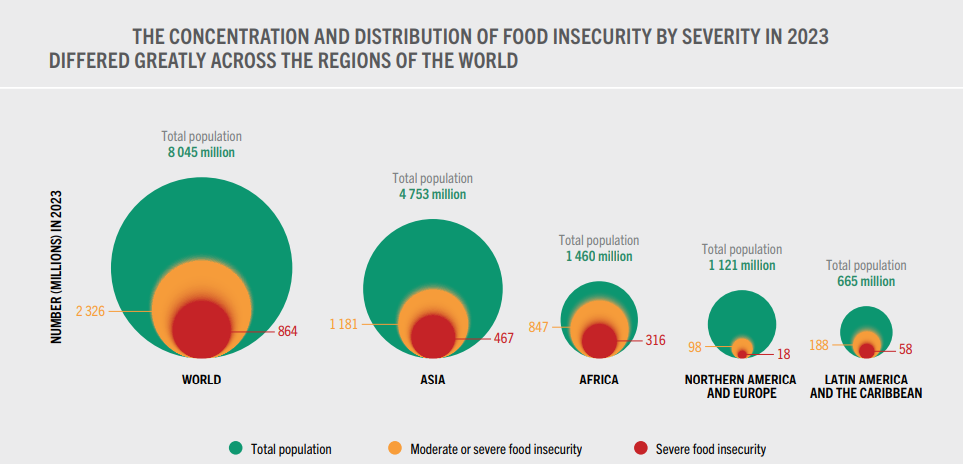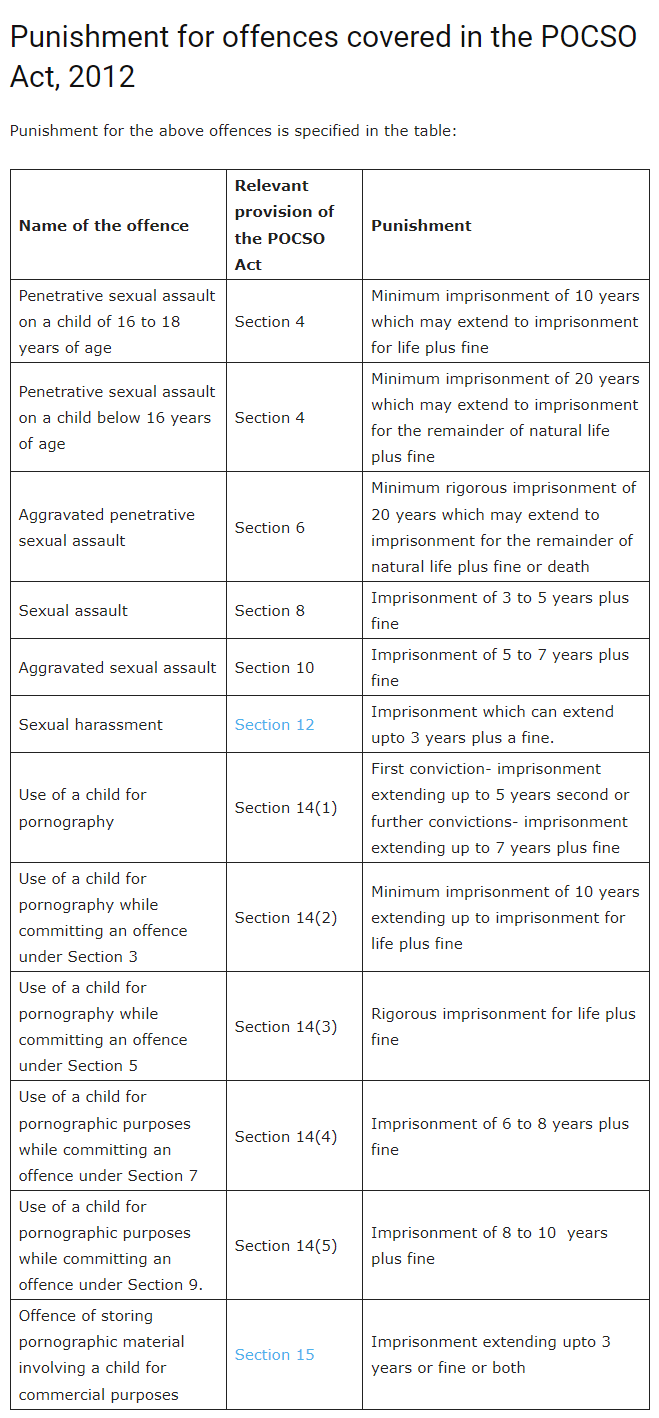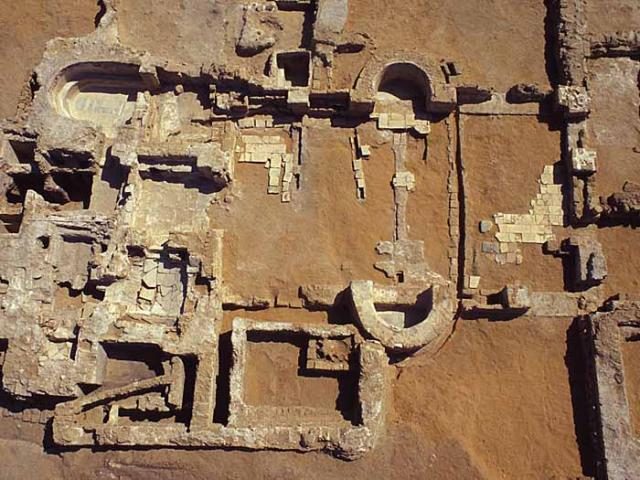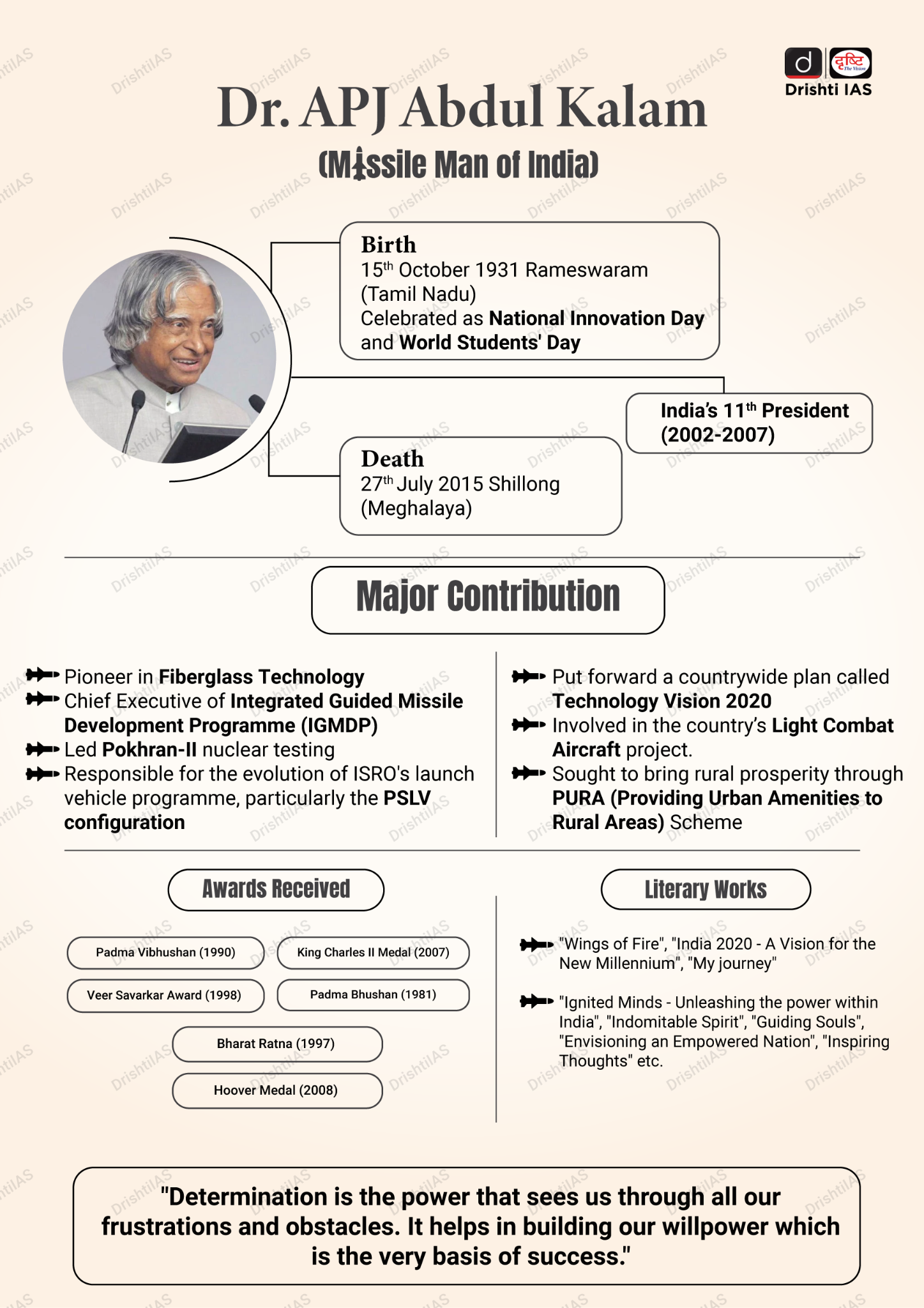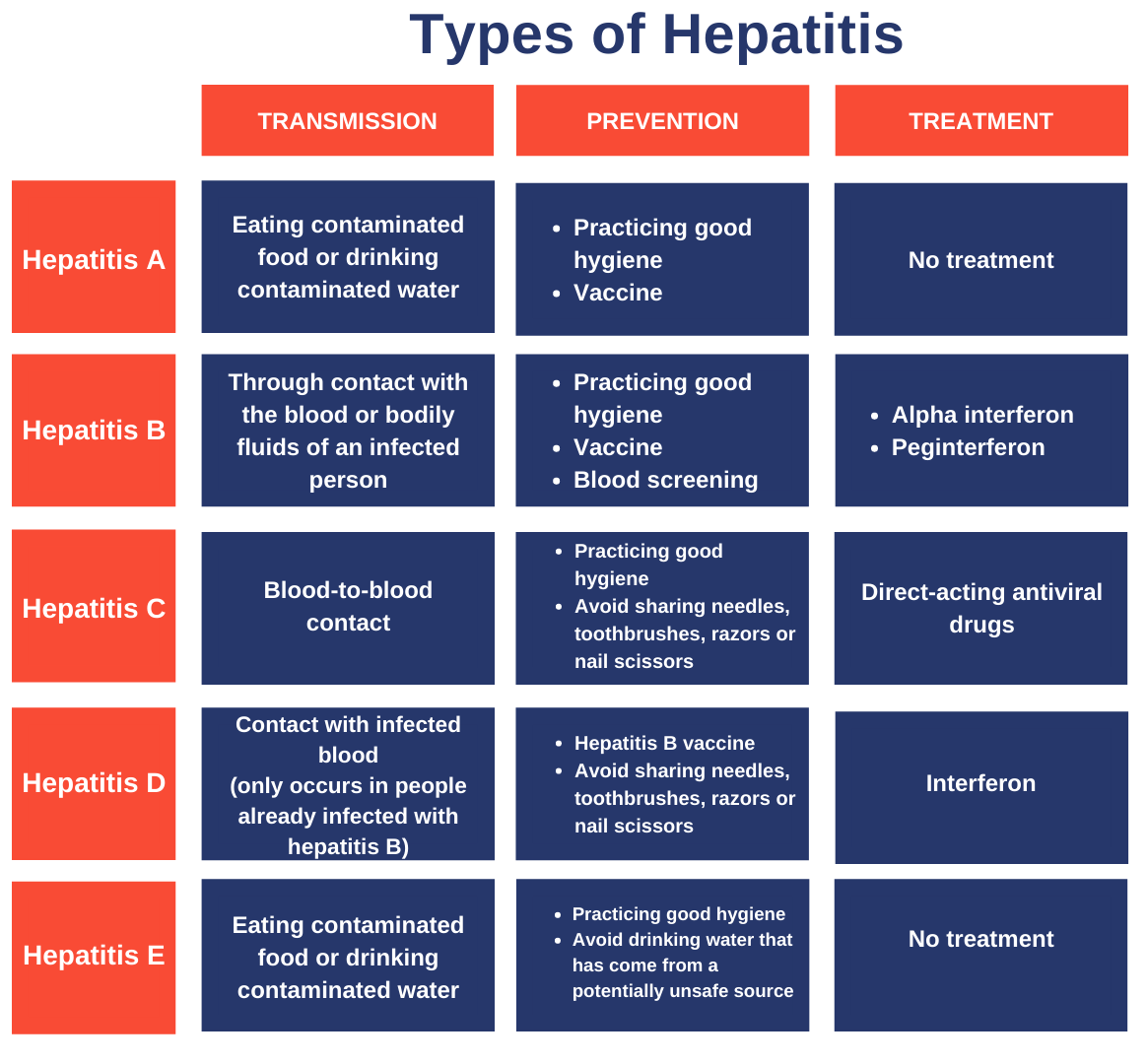The State of Food Security and Nutrition in the World 2024
For Prelims: United Nations Food and Agriculture Organization (FAO), Human Development Report 2021-22, Global Multidimensional Poverty Index MPI 2022, SOFI 2024, Food security, Undernourishment, Anaemia.
For Mains: Welfare Schemes, Issues Relating to Poverty & Hunger
Why in News?
Recently, the "State of Food Security and Nutrition in the World 2024" (SOFI 2024) report, published by FAO, IFAD, UNICEF, WFP, and WHO, presents a critical analysis of global food security and nutrition trends.
- This year's report emphasises the urgent need for increased financing to end hunger, food insecurity, and malnutrition in all its forms.
What are the Key Findings of the SOFI 2024 Report?
- Global Prevalence of Undernourishment: Between 713 and 757 million people faced hunger in 2023, with one out of eleven people in the world and one out of every five in Africa facing hunger.
- Asia, despite having a lower percentage, still harbours the largest number of undernourished people (384.5 million).
- Food Insecurity: Approximately 2.33 billion people experienced moderate or severe food insecurity in 2023. Severe food insecurity affected more than 864 million people globally.
- Cost of a Healthy Diet: The global average cost of a healthy diet rose to USD 3.96 in purchasing power parity (PPP) terms per person per day in 2022. Despite this increase, the number of people unable to afford a healthy diet fell to 2.83 billion in 2022.
- Regional Disparities: The cost of a healthy diet is highest in Latin America and the Caribbean and lowest in Oceania. The recovery in affordability has been uneven, with significant setbacks in Africa.
- Stunting and Wasting: There have been improvements in reducing the prevalence of stunting and wasting among children under five. However, progress is insufficient to meet the 2030 (SDG) targets.
- The rate of exclusive breastfeeding among infants under six months has increased but is still below the 2030 target.
- Obesity and Anaemia: Obesity rates are rising globally, and anaemia in women aged 15 to 49 years is increasing, posing significant public health challenges.
- Current Levels and Gaps: Public spending on food security and nutrition remains inadequate, particularly in low-income countries. Private financing flows are also difficult to track, exacerbating the funding gap.
What are the Key Highlights Related to India in the Report?
- India is home to 194.6 million undernourished individuals, the highest in the world.
- The number of undernourished people has decreased from 240 million in the 2004-06 period to the current figure.
- 55.6% of Indians, translating to 790 million people, cannot afford a healthy diet.
- This proportion has improved by about 3% points compared to 2022.
- 13% of India's population suffers from chronic undernourishment, indicating prolonged food insecurity.
- In the Global Hunger Index (GHI) 2023, India ranked 111th, highlighting significant issues in food security.
- India has the highest prevalence of wasting (18.7%) in South Asia and a high prevalence of stunting (31.7%) in children under five years.
- 27.4% of babies born in India have low birth weight, the highest in the world, reflecting maternal malnutrition.
- 53% of women in India are anaemic, the highest in South Asia. The global prevalence of anaemia in women aged 15-49 is expected to increase, driven significantly by South Asia.
- The prevalence of obesity in children under five years is 2.8%, and in adults, it has risen to 7.3%. A significant portion of the Indian population is physically inactive, contributing to the rise in obesity.
- The report highlights the increasing issue of both undernutrition and obesity co-existing within the same population, driven by common factors such as poor diet quality.
- The consumption of ultra-processed foods is linked to adverse health outcomes. The majority of food products by top global manufacturers in key countries, including India, are deemed unhealthy by WHO standards.
- India's public spending on food security and nutrition has seen some increases, but the report suggests that there is still a need for more effective allocation and utilisation of resources to address the root causes of food insecurity and malnutrition.
- The Covid-19 pandemic has exacerbated food insecurity and malnutrition issues in India. The economic downturn, loss of livelihoods, and disruptions in food supply chains have had lasting impacts on food access and affordability.
What are the Related Initiatives Taken in India?
What are the Key Recommendations in the Report?
- Increase Public Investment: The report highlights the need to increase public spending on food security and nutrition by boosting budgets for programs that reduce hunger and malnutrition and involving local communities in their planning and implementation to improve effectiveness and sustainability.
- Mobilise Private Sector Investment: Encouraging private sector investment through innovative financing mechanisms such as social bonds, green bonds, and sustainability-linked bonds can provide additional resources for food security initiatives.
- Strengthening global partnerships and aligning national policies with international frameworks can enhance the exchange of knowledge, technology, and resources for greater impact.
- Promote Climate-Resilient Agriculture: Developing and implementing climate-resilient agricultural practices is critical to mitigate the impact of climate change on food production. This includes investing in research and development of drought-resistant crops and sustainable farming practices.
- Improve Agrifood Systems: Enhancing the efficiency and sustainability of agrifood systems through better infrastructure, logistics, and market access can help reduce food loss and waste.
- Comprehensive Nutrition Programs: The report calls for integrated nutrition programs that address both undernutrition and overnutrition. This includes initiatives to promote balanced diets and physical activity to combat rising obesity rates.
- Focus on Vulnerable Populations: Policies should focus on supporting vulnerable groups, like small farmers, women, and children, by improving nutrition for pregnant women and young children through exclusive breastfeeding and providing essential vitamins and minerals.
- Strengthen Data Collection, Monitoring and Reporting: Improving data collection and integration with national databases is essential for tracking food security and nutrition, enabling better policy-making and identifying areas that need improvement.
|
Drishti Mains Question: Q. Examine the key challenges faced by India in ensuring food security. Discuss the underlying factors contributing to these challenges and suggest effective measures to address them. |
UPSC Civil Services Examination, Previous Year Question (PYQ)
Prelims:
Q. Which of the following is/are the indicator/indicators used by IFPRI to compute the Global Hunger Index Report? (2016)
- Undernourishment
- Child stunting
- Child mortality
Select the correct answer using the code given below:
(a) 1 only
(b) 2 and 3 only
(c) 1, 2 and 3
(d) 1 and 3 only
Ans: (c)
Q. How do District Rural Development Agencies(DRDAs) help in the reduction of rural poverty in India? (2012)
- DRDAs act as Panchayati Raj Institutions in certain specified backward regions of the country.
- DRDAs undertake area-specific scientific study of the causes of poverty and malnutrition and prepare detailed remedial measures.
- DRDAs secure inter-sectoral and interdepartmental coordination and cooperation for effective implementation of anti-poverty programmes.
- DRDAs watch over and ensure effective utilization of the funds intended for anti-poverty programmes.
Which of the statements given above is/are correct?
(a) 1, 2 and 3 only
(b) 3 and 4 only
(c) 4 only
(d) 1, 2, 3 and 4
Ans: (b)
Mains:
Q. Can the vicious cycle of genderinequality, poverty andmalnutrition be broken through microfinancing of women SHGs? Explain with examples. (2021)
Q. Despite Consistent experience of high growth, India still goes with the lowest indicators of human development. Examine the issues that make balanced and inclusive development elusive. (2019)
Maharashtra Special Public Security Bill 2024
For Prelims: Supreme Court, Unlawful Activities Prevention Act, National Investigation Agency, Cyber-terrorism, Judicial review
For Mains: Major Judicial Pronouncements Related to Bail Provisions, Concerns Related to UAPA, Maharashtra Special Public Security Bill, 2024
Why in News?
Recently the Maharashtra government has proposed a comprehensive new law, the Maharashtra Special Public Security (MSPS) Bill, 2024, aimed at addressing the increasing presence of Naxalism in urban areas.
- The Bill has sparked significant controversy and debate due to its broad and stringent provisions.
Note
- State of Naxalism in India: During the period from 2018 to 2023 there were 3,544 LWE-related incidents and 949 deaths.
- Urban Naxalism: The term 'Urban Naxal' is based off a Maoist strategy where they look to urban regions for leadership, organising masses and engaging in military tasks like providing personnel and infrastructure.
-
The strategy is based off a document by the CPI (Maoist) called "Urban Perspective," which explains that the focus has to be on organising the working class, which is “the leadership of our revolution”.
-
- However, there is no official definition of the term Urban Naxal.
What are the Provisions of the Maharashtra Special Public Security Bill, 2024?
- Background:
- The government contends that Naxalism, traditionally confined to remote regions, is now infiltrating urban areas through frontal organisations that provide logistics and safe havens for armed Naxal cadres.
- The existing laws, including the Unlawful Activities Prevention Act (UAPA) and the Maharashtra Control of Organised Crime Act (MCOCA), are deemed inadequate to tackle this evolving threat.
- The MSPS Bill is modelled after similar legislation in states like Chhattisgarh, Telangana, Andhra Pradesh, and Odisha, which have enacted Public Security Acts to curb Naxal activities.
- Key Provisions of the Bill:
- The government can declare any organisation as unlawful based on its activities.
- The Bill outlines four main offences related to unlawful organisations: being a member, raising funds, managing, and assisting in unlawful activities.
- Penalties range from imprisonment for 2-7 years and fines between Rs 2-5 lakh.
- The offences under the Bill are cognisable allowing arrests without a warrant, and non-bailable.
- The Bill allows for faster prosecution by permitting district magistrates or police commissioners to grant the necessary permissions, bypassing the need for sanction from higher authorities.
- Comparison with UAPA:
- While the UAPA also targets unlawful activities, the MSPS Bill expands the definition of "unlawful activity" to include acts that interfere with public order, and administration of law, and generate fear among the public.
- The UAPA's definitions have been refined by judicial interpretation over the years, whereas the MSPS Bill's definitions are apparently broader.
- Moreover, the MSPS Bill simplifies the prosecution process, which the government argues will reduce delays and improve enforcement.
Unlawful Activities (Prevention) Act (UAPA)
- The Unlawful Activities (Prevention) Act, 1967 was enacted to provide for more effective prevention of certain unlawful activities of individuals and associations, for dealing with terrorist activities, and for matters connected therewith.
- Unlawful activities are defined as actions supporting or inciting the cession or secession of any part of India, or actions questioning or disrespecting its sovereignty and territorial integrity.
- The National Investigation Agency (NIA) is empowered by the UAPA to investigate and prosecute cases nationwide.
- It underwent multiple amendments (2004, 2008, 2012 and 2019) expanding provisions related to terrorist financing, cyber-terrorism, individual designation as terrorist, and property seizure.
- Major Provisions:
- Till the year 2004, “unlawful" activities referred to actions related to secession and cession of territory. Following the 2004 amendment, the “terrorist act" was added to the list of offences.
- The 2019 amendment empowers the government to designate individuals as terrorists.
- The Act gives the central government complete authority to declare any activity as unlawful. If the government considers an activity unlawful, it can officially declare it so by publishing a notice in the Official Gazette.
- Under the UAPA, the investigating agency can file a charge sheet in maximum of 180 days after the arrests and the duration can be extended further after intimating the court.
- Both Indian and foreign nationals can be charged. It will be applicable to the offenders in the same manner, even if the crime is committed on a foreign land, outside India.
- It has the death penalty and life imprisonment as the highest punishments.
- Till the year 2004, “unlawful" activities referred to actions related to secession and cession of territory. Following the 2004 amendment, the “terrorist act" was added to the list of offences.
- Related Judgments:
- In Arup Bhuyan vs State Of Assam, 2011 the Supreme Court ruled that mere membership of a banned organisation will not incriminate a person. It can be done if a person resorts to violence or incites people to violence or does an act intended to create disorder.
- However, in 2023 the Supreme Court ruled that membership alone in such organisations can be considered an offence even without the presence of overt violence.
- In the People’s Union for Civil Liberties v. Union of India, 2004, the Court decreed that if human rights are violated in combating terrorism, it will be self-defeating.
- The court held that a former police officer is not a good choice to be appointed as a member of the National Human Rights Commission (NHRC) as their experience is more related to investigating crimes rather than protecting and promoting human rights.
- In the Mazdoor Kisan Shakti Sangathan v. Union of India, 2018, the Court said that protests against governmental and parliamentary actions are legitimate, although such protests and assemblies are supposed to be peaceful and non-violent.
- In Arup Bhuyan vs State Of Assam, 2011 the Supreme Court ruled that mere membership of a banned organisation will not incriminate a person. It can be done if a person resorts to violence or incites people to violence or does an act intended to create disorder.
Initiative of Government Against Naxalism
- National Policy and Action Plan to address Left Wing Extremism 2015
- Security Related Expenditure (SRE) Scheme: Scheme implemented in 10 LWE affected States for Security Related Expenditure.
- It relates to training and operational needs of security forces, ex-gratia payment to the family of civilians/security forces killed/injured in LWE violence, rehabilitation of surrendered LWE cadres, community policing, village defence committees and publicity materials.
- Special Central Assistance (SCA) for most LWE Affected Districts: It aims to fill the critical gaps in Public Infrastructure and Services, which are of emergent nature.
- Scheme of Fortified Police stations: Under the scheme, 604 fortified police stations have been constructed in LWE affected areas.
- Road Connectivity Project for LWE Affected Areas (RCPLWE): It aims at improving road connectivity in LWE affected States.
What are the Criticisms and Implications of the Bill?
- Criticism:
- Vagueness and Overreach: Critics argue that the Bill's definitions are too vague and broad, which could lead to misuse. Terms like "menace to public order" and "encouraging disobedience" are seen as subjective and open to interpretation.
- Threat to Civil Liberties: There are concerns that the Bill could be used to suppress dissent and target activists, journalists, and political opponents under the guise of combating Naxalism.
- Judicial Oversight: Unlike the UAPA, which requires confirmation of unlawful organisation declarations by a High Court judge-led tribunal, the MSPS Bill allows an advisory board of ex-judges or eligible persons to perform this function, raising concerns about adequate judicial oversight.
- Potential for Misuse: Provisions allowing the seizure of property and eviction without proper notice or hearing are seen as prone to abuse. The Bill’s power to penalise non-members for aiding unlawful organisations also raises concerns about overreach.
- Legal and Social Implications:
- Impact on Freedom of Expression: The broad definitions of unlawful activities could criminalise legitimate protests, criticism of the government, and investigative journalism.
- Judicial Precedents: Courts have emphasised the need for stringent laws to be narrowly defined and strictly interpreted. The MSPS Bill’s broader definitions could conflict with established judicial principles.
- Role of Civil Society: The Bill's potential to curb civil liberties may lead to increased activism and opposition from human rights organisations, highlighting the delicate balance between security and freedom in democratic societies.
Conclusion
The Maharashtra Special Public Security Bill, 2024, represents a significant shift in the state’s approach to combating Naxalism. While the government justifies the Bill as a necessary tool to address the evolving threat of urban Naxalism, the broad and stringent provisions raise serious concerns about civil liberties and potential misuse. The balance between ensuring public security and protecting democratic freedoms will be crucial in determining the Bill's future and its impact on Maharashtra’s legal and social fabric.
|
Drishti Mains Question: Q. Discuss the effectiveness of government policies and measures in addressing the Naxalite insurgency in India. What challenges do these measures face? |
UPSC Civil Services Examination, Previous Year Question (PYQ)
Mains:
Q. The persisting drives of the government for development of large industries in backward areas have resulted in isolating the tribal population and the farmers who face multiple displacements. With Malkangiri and Naxalbari foci, discuss the corrective strategies needed to win the Left-Wing Extremism (LWE) doctrine that affected citizens back into the mainstream of social and economic growth. (2015)
Q. Article 244 of the Indian Constitution relates to administration of scheduled areas and tribal areas. Analyze the impact of non-implementation of the provisions of the Fifth schedule on the growth of Left-wing extremism. (2018)
Q. What are the determinants of left-wing extremism in the Eastern part of India? What strategy should the Government of India, civil administration and security forces adopt to counter the threat in the affected areas? (2020)
Karnataka High Court Quashes POCSO Case
For Prelims: POCSO Act, 2012, United Nations, Indian Penal Code, Article 21, Child Welfare Committee, Deoxyribonucleic Acid (DNA)Tests
For Mains: POCSO Act and issues with the implementation, Issues Related to Children
Why in News?
The Karnataka High Court has recently quashed proceedings under the Protection of Children from Sexual Offences (POCSO) Act, 2012 against a 23-year-old man accused of raping a minor, who he subsequently married.
- This decision includes a caveat allowing the criminal proceedings to be revived if the man abandons his wife and child in the future. This condition is aimed at ensuring the welfare and protection of the mother and child.
How did the Court Justify the Quashing of the Case?
- Accused’s Counsel: Argued that the accused and the victim were in love and the crime was registered after the parents agreed to the marriage. Highlighted that both families had come forward to support the marriage.
- State’s Counsel: Argued that the case should not be quashed due to the heinous nature of the offence, which is punishable by ten years in prison. Emphasised the importance of taking the matter to trial.
- Court's Decision:
-
Protection of the Victim and Child: The court emphasised that releasing the petitioner without resolving the issue would leave the mother and child vulnerable, facing societal ignominy and potential jeopardy.
-
Victim's Potential Hostility: The court noted that the victim would likely turn hostile, making the conviction of the petitioner highly unlikely.
-
Justice highlighted the importance of considering the ground realities, stating that prolonging the criminal trial would cause undue agony and overshadow any eventual acquittal.
-
What is the Protection of Children from Sexual Offences (POCSO) Act, 2012?
- About: The Protection of Children from Sexual Offences Act, 2012 (POCSO Act, 2012) was enacted to protect children from sexual abuse, filling a significant legislative gap in India despite the United Nations' adoption of the Convention on the Rights of the Child in 1989.
- This Act imposes severe penalties, including up to 20 years of imprisonment and the death penalty for aggravated penetrative sexual assault.
- Need: Before the POCSO Act, 2012, India's only child protection legislation was the Goa Children’s Act, 2003. The Indian Penal Code (IPC) Sections 375, 354, and 377 were inadequate as they did not cover male children or provide clear definitions of 'modesty' and 'unnatural offence'.
- The rising cases of child sexual abuse necessitated a specific law, leading to the enforcement of the POCSO Act, driven by the Ministry of Women and Child Development.
- General principles:
- Right to be Treated with Dignity: Reflecting the importance of treating children with compassion and respect.
-
Right to Life and Survival: Ensuring children are protected as provided by Article 21 and raised in a secure environment.
-
Right Against Discrimination: Fair and just procedures without discrimination based on sex, religion, or culture.
-
Right to Preventive Measures: Training children to recognise and prevent abuse.
-
Right to be Informed: Keeping the child informed about legal proceedings.
-
Right to Privacy: Maintaining confidentiality of the proceedings to protect the child's privacy.
- Trial of Offences: Special courts can take cognisance without the accused being committed to trial. Efforts must be made to prevent the child from being exposed to the accused.
- Evidence must be recorded within 30 days, and trials should be completed within a year of taking cognisance.
- Emphasises the importance of medical examination, but notes that physical injuries may not always be present.
- Section 42A ensures that POCSO provisions override any conflicting laws.
- Shortcomings of the POCSO Act:
- Application of Last Seen Theory: The Supreme Court in Anjan Kumar Sarma v. State of Assam, 2017 ruled that this theory is weak without corroborative evidence, risking wrongful convictions.
- This theory states that if someone is the last person seen with the victim before a crime and cannot provide a credible explanation, there is a strong presumption that they are responsible for the crime.
- Consensual Sexual Activities: The Act prosecutes a non-minor partner in consensual sex with a minor, as minors' consent is deemed irrelevant.
- False Complaints by Children: Section 22 exempts children from punishment for false complaints, leading to potential misuse.
- Two-Finger Test: Despite being banned in 2012, this test is still conducted, violating the victim's privacy and dignity, as noted in Lillu @ Rajesh v. State of Haryana, 2013.
- The Supreme Court, in 2022 reaffirmed that conducting invasive ‘two-finger’ or ‘three-finger’ vaginal tests on rape or sexual assault survivors is considered misconduct. The tests are deemed regressive and are used to determine if the survivor was "habituated" to sexual intercourse.
- Unprepared Investigation Machinery: The Bombay High Court in the case of the Addl. Sessions Judge, Hoingoli and Ors. v. Bhawat and Ors., 2017 acquitted the accused due to unsealed evidence, highlighting faulty investigation procedures.
- Application of Last Seen Theory: The Supreme Court in Anjan Kumar Sarma v. State of Assam, 2017 ruled that this theory is weak without corroborative evidence, risking wrongful convictions.
- Punishment for Offences:
Significant Judicial Pronouncements on the POCSO Act, 2012
- Bijoy v. The State of West Bengal, 2017: In this case, the Calcutta High Court issued directives to protect the dignity of child victims of sexual assault.
- Police must register FIRs under Section 19 of the POCSO Act and inform victims and their parents about legal aid rights.
- Immediate medical examination of the child post-First Information Report (FIR) registration as per Section 27 of the POCSO Act.
- Victims identified as 'children in need of care and protection' under the Juvenile Justice Act must be forwarded to the Child Welfare Committee (CWC). Victim identities are to be kept confidential.
- Compensation can be awarded at the interim stage by the Special Court, independent of the convict's compensation post-conviction, aimed at relief and rehabilitation of the child victim.
- Vishnu Kumar v. State of Chhattisgarh, 2017: The Chhattisgarh High Court highlighted the need for compliance with Section 36 of the POCSO Act. Guidelines included:
- Ensuring child witnesses are comfortable during proceedings, possibly through in-camera sessions and engaging them personally.
- Flexibility in evidence rules to prioritise truth over strict adherence to procedures. Recording child statements should allow for breaks to ensure comfort and accuracy.
- Dinesh Kumar Maurya v. State of U.P. ,2016: The Allahabad High Court set aside a conviction due to lack of medical evidence. Important observations included:
- Injuries are not necessary for proving sexual assault; victim testimony is crucial.
- Courts must consider the potential for false allegations due to external influences on minors.
- Sunderlal v. The State of M.P., 2017: The Madhya Pradesh High Court addressed a petition for terminating a minor's pregnancy. Key directives:
- Consent from the parent suffices for a minor; the minor's consent is not required. The right to terminate pregnancy is derived from Article 21 of the Constitution.
- A committee of medical practitioners must evaluate the termination request. Post-termination, the Deoxyribonucleic Acid (DNA)Tests of the foetus must be preserved according to legal procedures.
- Consent from the parent suffices for a minor; the minor's consent is not required. The right to terminate pregnancy is derived from Article 21 of the Constitution.
|
Drishti Mains Question: Q. Analyze the role of the Protection of Children from Sexual Offences (POCSO) Act, 2012 in safeguarding minors from sexual abuse. What are the key provisions of the Act and their significance? |
UPSC Civil Services Examination Previous Year Question (PYQ)
Q. Examine the main provisions of the National Child Policy and throw light on the status of its implementation. (2016)
Tell Umm Amer and Assam’s Charaideo Moidams Recognised by UNESCO
For Prelims: Assam’s Charaideo Moidams, World Heritage Committee, UNESCO World Heritage Sites list, Gaza
For Mains: Indian Heritage Sites, Conservation of Archaeological Sites
Why in News?
Recently, the World Heritage Committee included Tell Umm Amer, also known as the Monastery of Saint Hilarion, in the United Nations Educational, Scientific and Cultural Organization’s (UNESCO) World Heritage Sites list, and the List of World Heritage in Danger.
- Additionally, Assam’s Charaideo Moidams was added to the UNESCO World Heritage Sites list, marking India’s 43rd World Heritage Site.
What are the Key Facts About Tell Umm Amer?
- Historical Background: Tell Umm Amer, located in the Gaza Strip, is an ancient Christian monastery dating back to the fourth century CE. Founded by Hilarion the Great (291-371 CE), it is recognised as one of the earliest and largest monastic communities in the Middle East.
- Archaeological Importance: The site contains extensive ruins including five successive churches, bath and sanctuary complexes, geometric mosaics, and an expansive crypt. It is considered a hub of religious, cultural, and economic activity from its time until the Umayyad period (661–750).
- Recent Damage: The ongoing conflict in Gaza has caused significant damage to cultural sites, including Tell Umm Amer.
- The World Heritage Committee's decision to include it in the World Heritage List and the List of World Heritage in Danger underscores the urgency of preserving this historical monument amidst the conflict.
- World Heritage Status Affect on Tell Umm Amer:
- Being listed on the World Heritage List brings international recognition and protection duties. If a site is designated as "in danger," it can receive increased international technical and financial support for preservation efforts.
- In December 2023, UNESCO granted Tell Umm Amer provisional enhanced protection under the 1954 Hague Convention, providing the highest level of immunity from intentional damage during armed conflict.
Note:
- The List of World Heritage in Danger informs the international community about threats to the characteristics of a property on the World Heritage List and aims to encourage corrective action.
- It includes sites facing dangers such as armed conflict, natural disasters, pollution, poaching, urbanisation, and tourist development.
- The inscription on the list can be due to imminent threats or potential negative effects on the property's World Heritage values.
- During its 43rd session in Baku in 2019, the World Heritage Committee emphasised that listing a property as World Heritage in Danger aims to gather global support to help the State Party address the challenges faced by the property.
- This involves working with the World Heritage Centre and Advisory Bodies to develop a plan of corrective measures to achieve the desired state of conservation for the property.
What are the Key Facts About Assam’s Charaideo Moidams?
- The Charaideo Moidams in Assam hold historical significance as the burial sites of the Ahom dynasty, established in 1253 AD by King Sukaphaa.
- These earthen mounds, known as moidams, were used for burying royalty and aristocracy, reflecting the unique funerary practices of the Ahom people.
- The moidams, resembling ancient Egyptians give Charaideo moidams the nickname "Pyramids of Assam '' are now popular tourist attractions, but many are in disrepair.
- The Ahoms, who ruled Assam for six centuries, practised burial instead of cremation, and the grandeur of the moidams often reflected the status of the buried individuals.
- Chaolung Sukapha migrated from Burma to the Brahmaputra valley, establishing the first principality in Charaideo. The Ahoms suppressed the older political system, and adopted Hinduism and the Assamese language while maintaining their traditional beliefs.
- Sukapha successfully assimilated different communities and tribes, earning the title of the architect of 'Bor Asom' or 'Greater Assam'.
- The Ahom dynasty's legacy continues to be celebrated in Assam, notably through events like the 400th birth anniversary of Ahom general Lachit Borphukan. Assam celebrates ‘Asom Divas’ on 2nd December every year to commemorate Sukapha and his rule.
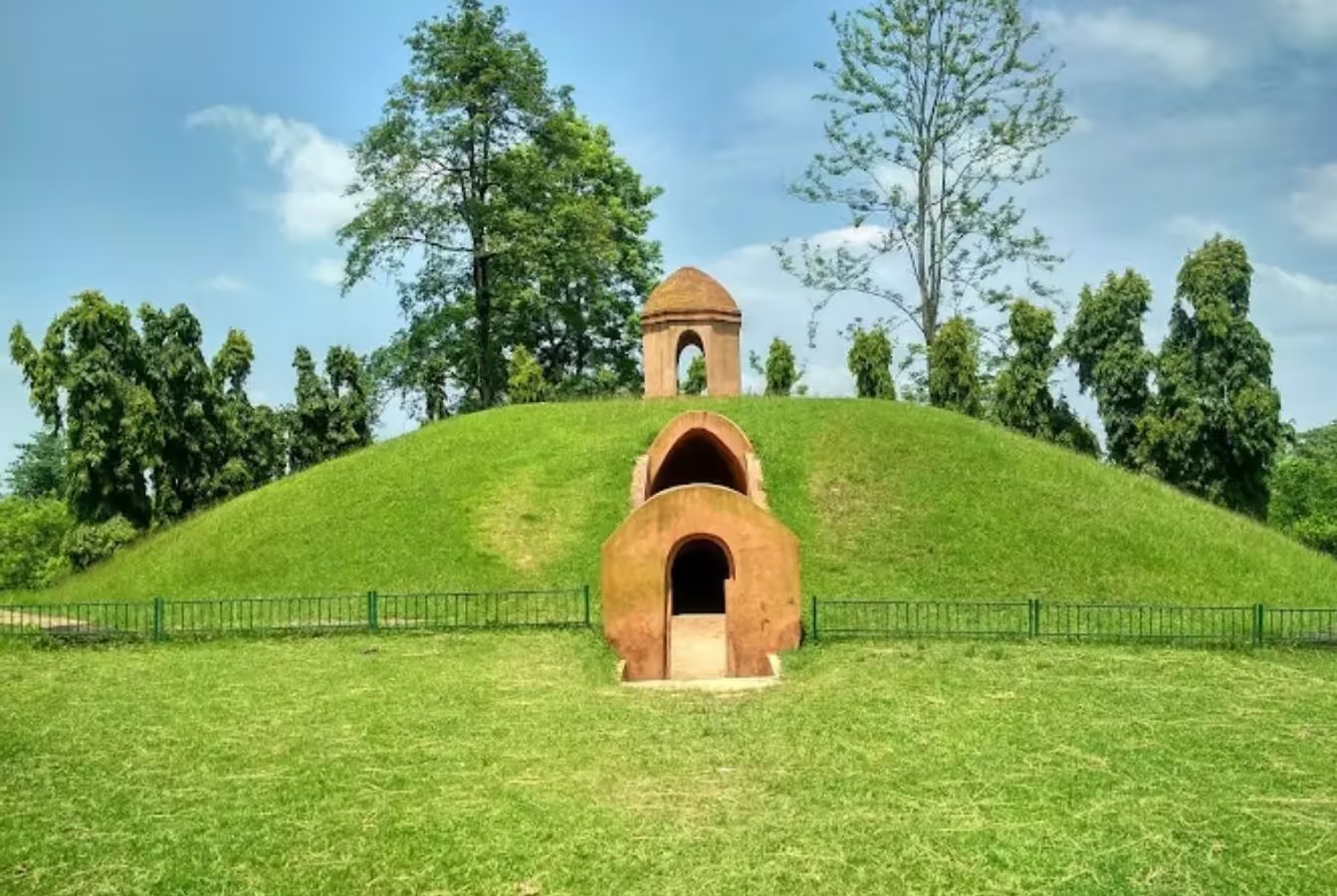
Read more: Assam's Moidams to be Considered for World Heritage List
|
Drishti Mains Question: Q. Discuss the significance of UNESCO World Heritage Sites in preserving cultural heritage, with specific reference to the recent inclusion of Tell Umm Amer and Charaideo Moidams. |
National Mission for Manuscripts and National Culture Fund
Why in News?
Recently the Ministry of Culture and Tourism shed light on the achievements made in the National Mission for Manuscripts and National Culture Fund.
What are the National Mission for Manuscripts?
- About:
- The National Mission for Manuscripts was established in 2003, by the Ministry of Tourism and Culture, Government of India.
- Objective:
- The key objectives of the National Mission for Manuscripts are documentation, conservation, digitization, and online dissemination of the manuscript heritage of India.
- To achieve this mandate, the mission has established more than 100 Manuscripts Resource Centres and Manuscripts Conservation Centres all over India.
- India possesses an estimated ten million manuscripts, probably the largest collection in the world. These cover a variety of themes, textures and aesthetics, scripts, languages, calligraphies, illuminations, and illustrations.
- The key objectives of the National Mission for Manuscripts are documentation, conservation, digitization, and online dissemination of the manuscript heritage of India.
- Manuscript:
- A manuscript is a handwritten composition on paper, bark, cloth, metal, palm leaf, or any other material dating back at least seventy-five years that has significant scientific, historical, or aesthetic value.
- Manuscripts differ from historical records like epigraphs, firmans, and revenue records, as they primarily contain knowledge content rather than direct historical information.
- Manuscripts are found in hundreds of different languages and scripts.
- A manuscript is a handwritten composition on paper, bark, cloth, metal, palm leaf, or any other material dating back at least seventy-five years that has significant scientific, historical, or aesthetic value.
Note
The Ancient Monuments and Archaeological Sites and Remains Act, 1958 defines an "Ancient Monument" any structure, erection or monument, or any tumulus or place of interment, or any cave,rock-sculpture, inscription or monolith which is of historical, archaeological or artistic interest and which has been in existence for not less than 100 years.
What is the National Culture Fund?
- About:
- The government set up the National Culture Fund (NCF) as a Trust in 1996 under the Charitable Endowment Act, 1890 to mobilise extra resources through Public Private Partnerships (PPP) towards promoting, protecting, and preserving India’s cultural heritage.
- It serves as a financing mechanism for enabling donor/sponsor institutions to support the Protection, Restoration, Conservation, and Development of India’s rich tangible and intangible culture and heritage (Monuments/Cultural Traditions) directly as partners with the Government.
- Objectives:
- For the training and development of a cadre of specialists and cultural administrators.
- Provide additional space in existing museums & construct new museums to accommodate or create new & special galleries.
- Documentation of cultural expressions and forms that have lost their relevance in contemporary scenarios and are either fading out or facing extinction.
- Features of NCF:
- NCF provides a dependable and innovative platform for partnerships in the fields of heritage, culture, and the arts.
- The projects are overseen by a Project Implementation Committee (PIC) that has representatives from the Donor, Implementer, and NCF.
- The accounts of NCF are audited by the Comptroller and Auditor General of India annually.
- Members:
- NCF is managed by a Council Chaired by Minister of Culture) and an Executive Committee (chaired by Secretary).
UPSC Civil Services Examination, Previous Year Question (PYQ)
Prelims:
Q. Who among the following Mughal Emperors shifted emphasis from illustrated manuscripts to album and individual portrait? (2019)
(a) Humayun
(b) Akbar
(c) Jahangir
(d) Shah Jahan
Ans: (c)
Q. Recently, the manuscripts of which one of the following have been included in the UNESCO’s Memory of World Register? (2008)
(a) Abhidhamma Pitaka
(b) Mahabharata
(c) Ramayana
(d) Rig-Veda
Ans: (d)
Mains:
Q. Safeguarding the Indian art heritage is the need of the moment. Discuss. (2018)
Leander Paes in Tennis Hall of Fame
Recently, Indian tennis legends Leander Paes and Vijay Amritraj were inducted into the sport’s Hall of Fame.
- Leander Paes was inducted into the Player Category of the International Tennis Hall of Fame.
- He has won 18 Grand Slam titles in doubles and mixed doubles and was a former doubles world No. 1.
- He was awarded the Padma Shri in 2001 and Padma Bhushan in 2014.
- Vijay Amritraj, a former Indian player, is recognised in the Contributor Category.
- He played his first Grand Prix event in 1970. He was honoured with the Padma Shri award in 1983.
- He was a part of the Indian Davis Cup team that reached the finals in 1974 and 1987. He was also appointed a United Nations ambassador for peace in 2001.
- The International Tennis Hall of Fame (ITHF) is a prestigious institution and museum dedicated to the sport of tennis. It is located in Newport, Rhode Island, United States.
- It serves as the official hall of fame for tennis and celebrates the history, achievements, and contributions of outstanding individuals and organisations to the sport of tennis.
Read more: Grand Slam
Revamped Model Skill Loan Scheme
- The government has launched a revamped 'model skill loan scheme' aimed at enhancing accessibility to skill development courses with a significantly increased maximum loan limit.
- The new scheme raises the maximum loan limit from Rs 1.5 lakh to Rs 7.5 lakh. Initially launched in 2015, the old scheme saw low uptake due to insufficient loan limits.
- Announced in the Union Budget 2024-2025, the revised scheme aims to benefit 25,000 students annually. It now includes non-banking financial companies (NBFCs), NBFC-MFIs (micro-finance institutions), and small finance banks as eligible lending institutions.
- Broadened Course Access: The revised scheme will now allow access to more skill courses, against only national skill qualification framework (NSQF)-aligned courses under the old scheme. Also, non-NSQF courses that are onboarded on the Skill India Digital Hub platform will come under the scheme.
- Previous Performance: As of March 2024, loans amounting to Rs 115.75 crore were extended to 10,077 borrowers, highlighting low fund utilisation due to high course fees.
Read more: Skill Development in India
Manu Bhaker Wins Olympic Bronze
Recently, Manu Bhaker won a bronze medal in the women’s 10m air pistol event at the Paris 2024 Olympics.
The Olympic Victory:
- This is the first medal for India at the Paris 2024 Olympics and the first Olympic medal in shooting for India since the London 2012 Games.
- Manu, who hails from Jhajjar, Haryana, is the first Indian female shooter to win an Olympic medal.
- She also became the first female shooter to reach an Olympic final in an individual event in the last 20 years.
- Manu Bhaker is the fifth Indian shooter to win an Olympic medal, following Rajyavardhan Singh Rathore (2004 Athens), Abhinav Bindra (2008 Beijing), Vijay Kumar (2012 London), and Gagan Narang (2012 London).
Other Achievements of Manu:
- At the National Shooting Championships 2017, she won 9 gold medals and set a record in the 10m Air Pistol final.
- In 2018, she became a teenage sensation with a gold medal at the Commonwealth Games and won the gold medal in the Women's 10m Air Pistol at the ISSF World Cup in Guadalajara, Mexico.
- Manu has also won medals at Asian Games (2022), World Championship, Baku (2023), Asian Shooting Championship, Changwon (2023), World Cup, Bhopal (2023), World Championship, Cairo (2022), World University Games, Chengdu (2021) sports events.
Read more: Olympic Order Awarded to Abhinav Bindra
Multilateral Exercise Khaan Quest 2024
Recently, the Indian contingent participated in the 21st edition of Khaan Quest, a multinational peacekeeping exercise, being held from 27th July 2024 to 9th August 2024 in the Five Hills Training Area in the Mongolian capital of Ulaanbaatar.
- The exercise aims to develop interoperability and share best practices in tactics, techniques, and procedures for joint operations among the participating countries.
- The exercise is designed to prepare the Indian Armed Forces for peacekeeping missions in a multinational environment, enhancing interoperability and military readiness under Chapter VII of the United Nations Charter.
- The Indian contingent consists of 40 personnel from a Battalion of the Madras Regiment, along with additional members.
- Approximately 430 participants from 23 countries are part of the exercise, including Australia, Canada, China, Japan, Turkiye, the United States, and the United Kingdom.
- Khaan Quest started as a bilateral event between the U.S. and Mongolian armed forces in 2003 and became a multinational peacekeeping exercise from 2006 onwards.
Read more: Ex Khaan Quest 2022.
Kalam's 9th Death Anniversary
27th July is observed as the death anniversary of former President Dr APJ Abdul Kalam. He is an inspiration for Indians due to his unparalleled dedication as a scientist, teacher, and the 11th President of India (2002-07).
About:
- Born on 15th October 1931 at Rameswaram in Tamil Nadu.
- He graduated in Science from St Joseph's College, Trichy in 1954 and specialised in Aeronautical Engineering from Madras Institute of Technology (MIT) in 1957.
- He is one of the most distinguished scientists in India with the unique honour of receiving honorary doctorates from 48 Universities and institutions in India and abroad.
- He planned programmes to produce a number of successful missiles, which helped earn him the nickname “Missile Man of India”.
Read More: Contribution of Dr A. P. J. Abdul Kalam
World Hepatitis Day
World Hepatitis Day, observed on 28th July, raises awareness of viral hepatitis, an inflammation of the liver that causes severe liver disease and cancer.
- The date of 28th July was chosen because it is the birthday of Nobel-prize winning scientist Dr Baruch Blumberg, who discovered hepatitis B virus (HBV) and developed a diagnostic test and vaccine for the virus.
- Theme 2024: “It’s time for action.”
- Hepatitis symptoms include fever, fatigue, loss of appetite, nausea, vomiting, abdominal pain, dark urine, clay-coloured bowel movements, joint pain, and jaundice.
- Hepatitis has 5 main strains - A, B, C, D, and E, each with distinct transmission methods and health effects. Hepatitis B and C are the most common, causing 1.3 million deaths and 2.2 million new infections annually. With a person dying every 30 seconds from a hepatitis-related illness.
- Additional causes include drug and alcohol misuse, fatty liver hepatitis, and autoimmune response targeting the liver.
- Initiatives to Tackle Hepatitis:
-
India: National Viral Hepatitis Control Program (eliminate viral hepatitis as a public health threat in the country by 2030), India's Universal Immunization Programme (UIP) (offers free vaccination including Hepatitis B).
Global: World Health Organization (WHO) Elimination of hepatitis by 2030 (reduce new hepatitis infections by 90% and deaths by 65% between 2016 and 2030).
-
Read more: Global Hepatitis Report 2024
India Assumes Chairmanship of Asian Disaster Preparedness Centre
India took over as Chair of the Asian Disaster Preparedness Centre (ADPC) for 2024-25, playing a pivotal role in global and regional Disaster Risk Reduction (DRR).
- ADPC is an autonomous international organisation focused on disaster risk reduction and climate resilience in Asia and the Pacific region.
- It was founded by India and eight neighboring countries: Bangladesh, Cambodia, China, Nepal, Pakistan, Philippines, Sri Lanka, and Thailand.
- ADPC operates as an autonomous international organisation governed by the Board of Trustees, with headquarters in Bangkok, Thailand and sub-centers in operational countries.
- India has spearheaded international efforts in DRR, notably through the establishment of the Coalition for Disaster Resilient Infrastructure (CDRI) and India is committed to the Sendai Framework for Disaster Risk Reduction (SFDRR), which it signed during the Third UN World Conference on Disaster Risk Reduction in 2015.
- The Disaster Management Act of 2005 establishes the legal and institutional framework for disaster management in India at national, state, and district levels.
- The National Disaster Management Authority (NDMA) is the apex body responsible for policy formulation, while the State Disaster Management Authority (SDMA) and District Disaster Management Authority (DDMA) oversee state and district-level policies and plans.
- Key Institutions: National Institute of Disaster Management (NIDM) focuses on capacity development, training, research, functions under NDMA.
- National Disaster Response Force (NDRF) the world's largest rapid reaction force dedicated to disaster response. It is a specialised response force for natural and man-made disasters, including Chemical, Biological, Radiological, and Nuclear emergencies. It operates under NDMA's direction.
Read more: Making India Disaster Resilient

